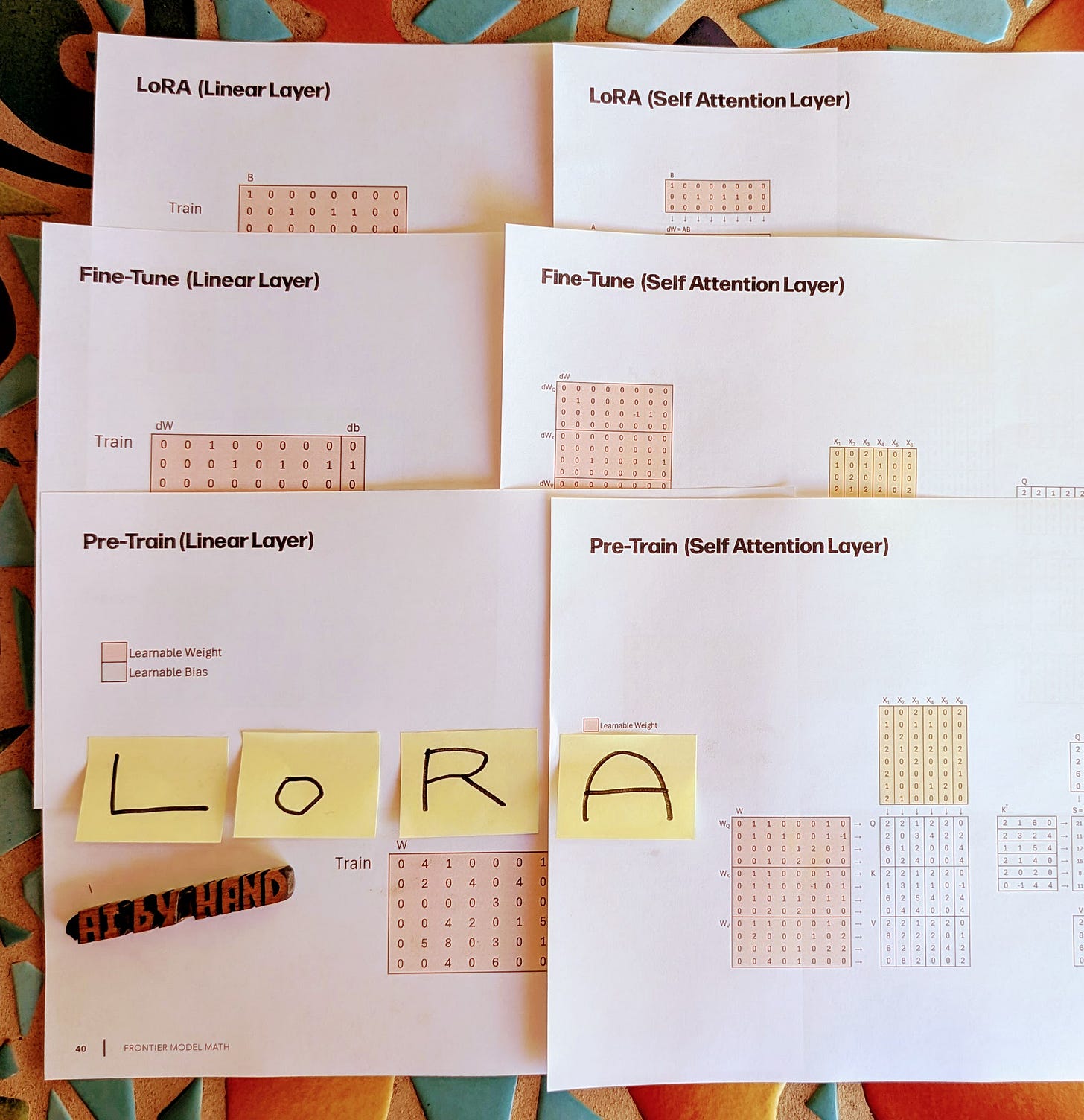LoRA, Fine-Tune, Pre-Train
Frontier AI by Hand ✍️
When Apple recently released their tech report, Apple Intelligence Foundation Language Models Tech Report, I wasn’t surprised to see LoRA mentioned.
By now, LoRA isn’t just a research curiosity — it’s everywhere. From startups running small models on edge devices to major players scaling frontier systems, parameter-efficient fine-tuning has become the standard toolkit.
What’s especially significant is that Apple highlights LoRA as a capability they want for their developers — “to integrate these capabilities with just a few lines of code.” That’s a strong signal of how mainstream LoRA has become.
Yet even though the idea behind LoRA is deceptively simple, many AI engineers have never looked at the math — beyond making a few library calls.
Not long ago, one company’s AI team leader reached out to me:
“Can you help our team really understand LoRA?”
The company is deeply engaged in parameter-efficient fine-tuning, and they know that true understanding requires going beyond the API.
Worksheets
This week’s Frontier issue comes with six brand new worksheets on Pre-Train, Fine-Tune, and LoRA — shown side by side in both Linear Layer and Self-Attention (3 × 2 = 6). I built them to help you get straight to the math and intuition — no time wasted slogging through equations in papers.
The six new worksheets are:
Pre-Train (Linear Layer)
Fine-Tune (Linear Layer)
LoRA (Linear Layer)
Pre-Train (Self Attention Layer)
Fine-Tune (Self Attention Layer)
LoRA (Self Attention Layer)
Next week, I’ll introduce you to LoRA’s extended family — qLoRA, DoRA, BitFit, and LongLoRA.
Download
The worksheets are available to AI by Hand Academy members. You can become a member either (1) directly through the Academy or (2) via a paid Substack subscription. Both options provide the same access.



